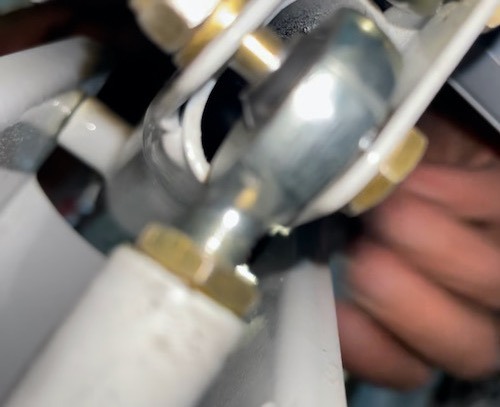A non-builder friend, who has been flying his secondhand RV-8 for several years, texted me a video and a question: "Is this bolt on the bottom of the stick supposed to be loose?" With his permission, I've uploaded the video here for general awareness. Probably most people reading this can tell what's wrong just from a blurry still image:

All the washers are missing from inside the fork on the bottom of the control stick, allowing the rod end bearing on the elevator pushrod to wobble back and forth. That probably matters less than the fact that the pivot bolt has been "torqued" on essentially nothing at all, so the only thing keeping the nut from backing off is a little patch of nylon.
Needless to say, I advised the owner to study the plans and undertake a meticulous end-to-end inspection of the entire control system before further flight. No, I don't know how this was missed during the several previous condition inspections.
A good reminder to be extra fastidious about control system hardware!

All the washers are missing from inside the fork on the bottom of the control stick, allowing the rod end bearing on the elevator pushrod to wobble back and forth. That probably matters less than the fact that the pivot bolt has been "torqued" on essentially nothing at all, so the only thing keeping the nut from backing off is a little patch of nylon.
Needless to say, I advised the owner to study the plans and undertake a meticulous end-to-end inspection of the entire control system before further flight. No, I don't know how this was missed during the several previous condition inspections.
A good reminder to be extra fastidious about control system hardware!
Last edited:




